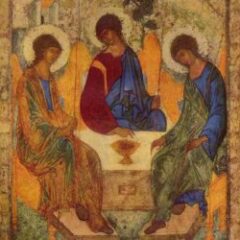Introduction

The Chinese Orthodox Church is an autonomous Eastern Orthodox church in China, which, prior to the Chinese Cultural Revolution in 1966, was estimated to have as many as twenty thousand members.
It was granted autonomy by its mother church, the Russian Orthodox Church in the mid 1950s. Nowadays, Orthodox Christianity is practiced primarily by the ethnic Russian minority in China.
An early medieval mission of the Assyrian Church of the East brought Christianity to China but it was suppressed in the 9th century. The Christianity of that period is commemorated by the Nestorian Stele and Daqin Pagoda of Xi’an. Assyrian Christianity was again introduced during the Yuan Dynasty but declined rapidly with the coming of the Ming Dynasty.
The first mission establishment was begun in 1715 at Beijing by an Orthodox Archimandrite, Hilarion. This mission is first recorded in the Russo-Chinese Treaty of Kyakhta (1727). Under Sava Vladislavich’s pressure, the Chinese conceded to the Russians the right to build an Orthodox chapel at the ambassadorial quarters of Beijing. The intention of the mission was not to evangelize among the Chinese but merely to serve as chaplains to the original mission and, later, to the Russian diplomatic mission staff as well.
106 Orthodox churches were opened in China by 1949. In general the parishioners of these churches were Russian refugees, and the Chinese part was composed of about 10,000 people. The Cultural Revolution obliterated or nearly obliterated the Chinese Orthodox Church. Many churches where destroyed during the Cultural Revolution (St Nicholas’ Orthodox church in Harbin, for example). Several Orthodox congregations continue to meet in Beijing, in northeast China (in Heilongjiang and elsewhere), and in western China (Xinjiang – Urumqi and Ghulja), with, apparently, the tacit consent of the government. There are also Orthodox parishes in Shanghai, Province of Guangdong, Hong Kong, and Taiwan.
Type your query in the box below:
After 2005
As of 2005 there were only five priests; however, a number of Chinese nationals are currently studying in Orthodox seminaries in Russia, with the intention of returning to China to serve as priests. Two former Orthodox churches in Shanghai are currently in a process of being returned to the Church and no activities are carried out inside. Meanwhile, as of the early 21st century, The Church operates relatively freely in Hong Kong (where the Ecumenical Patriarch has sent a metropolitan, Bishop Nikitas and the Russian Orthodox parish of Saint Peter and Saint Paul resumed its operation) and Taiwan (where archimandrite Jonah George Mourtos leads a mission church).
The Evenks of both the Russian Federation and the People’s Republic of China are a nominally Orthodox Christian people. Along with their Evenks cousins and a few other tribes in Siberia or in China, they are some of the only Asiatic peoples who nominally practice Orthodox Christianity, which they had voluntarily (as opposed to being coerced to do so) adopted during contacts from Russian expansion into Siberia. There are also around 3,000 Evenks in neighboring Heilongjiang Province.
